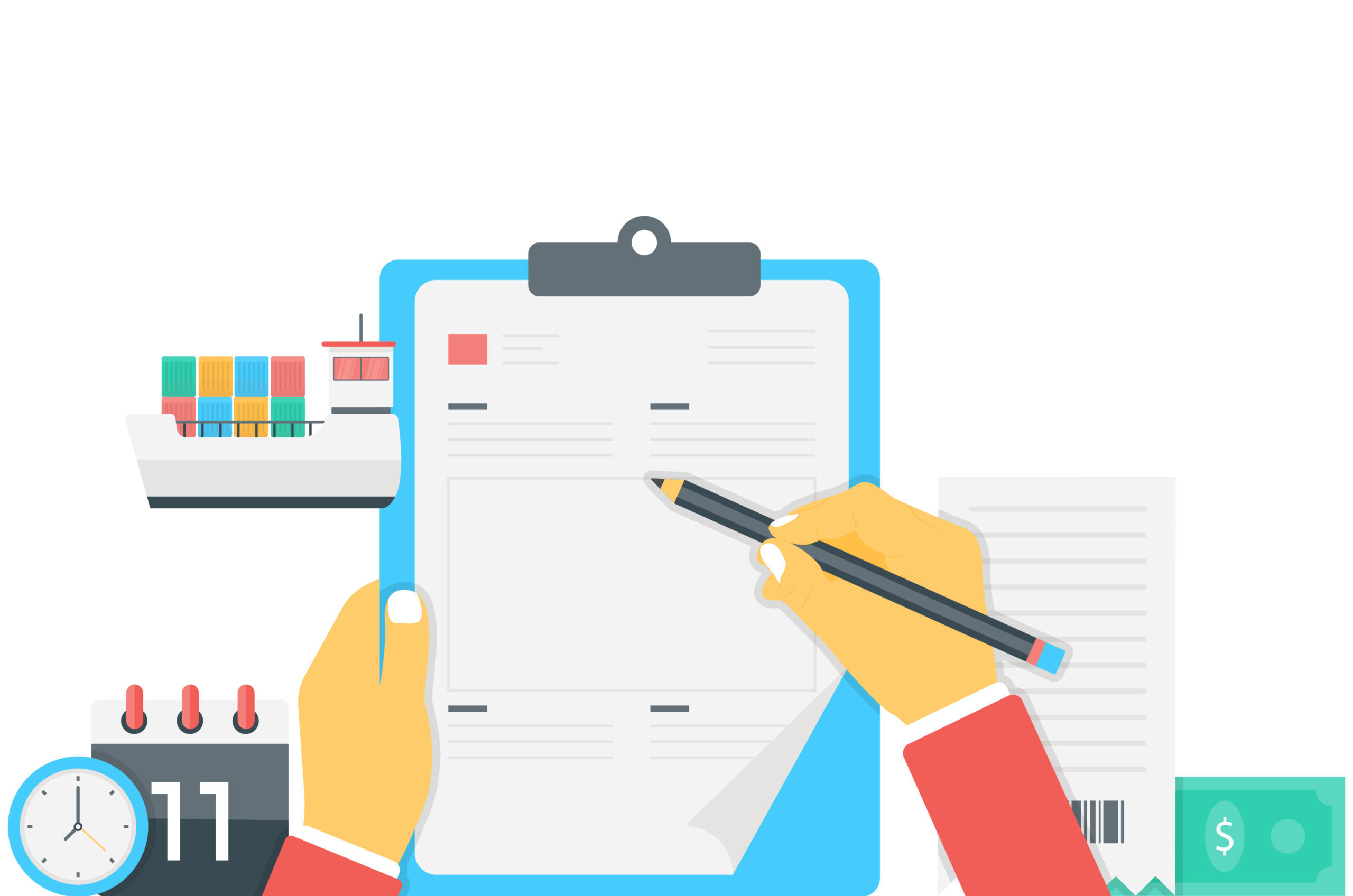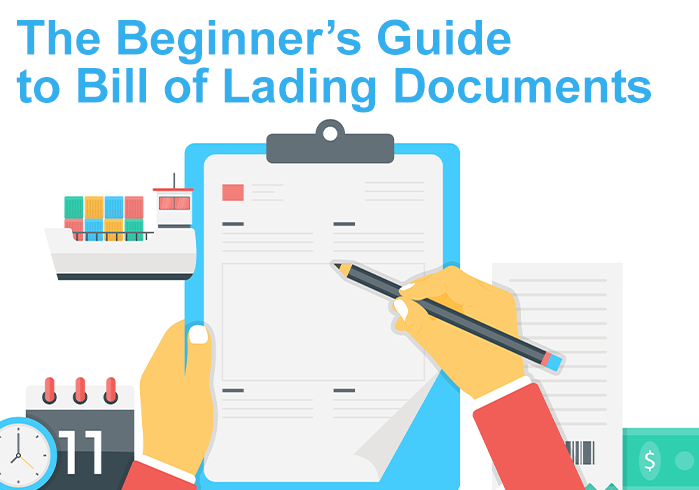
When you ship any goods across the world, you’ll be dealing with a lot of paperwork. While you don’t want to forget any of those documents (no matter how numerous or tedious they may be), there’s one you definitely want to become familiar with: the bill of lading.
A bill of lading is one of the most common – and important – documents in the shipping and logistics industry. It’s been a key aspect of international trade for centuries, and because of its pervasiveness in the industry, it’s easy to overlook this type of document. But to do so would open you up to a world of shipping troubles.
Here’s what you need to know about a bill of lading for shipping and logistics planning:
What is a Bill of Lading?
Typically abbreviated as B/L or BoL, a bill of lading is a legal transport document issued by a carrier to a shipper. It plays three different roles:
1) Evidence of contract of carriage with details of the amount, type, and destination (and even sometimes the condition) of the shipped freight
2) Receipt that the goods have been properly loaded onto the transporting vessel
3) Title of goods, which often requires the carrier to turn over the goods to the consignee (receiving party) noted on the BoL
Historically, the word “lading” comes from an Old English term meaning “loading.” These bills have existed in some form or another since the Roman times, but they became a more common practice during the Medieval times.
Why are Bills of Lading important?
BoLs are vital to the successful transportation of goods. Primarily, the document serves as a legally-binding agreement which helps the carrier process the cargo according to the original contract terms set up by the carrier and shipper or freight owner. This means the BoL can be used in litigation concerns, and inaccurate BoLs can expose carriers to anything from claims to criminal prosecution.
Additionally, since most BoLs are considered a title of goods, these documents (much like the cargo they list) can be used in negotiations. Because of this, some types of BoLs can be endorsed and transferred to third parties while the cargo is in transit, ultimately giving control of the cargo to different parties along the route. This also means that if a carrier hasn’t been paid in full for the transportation of the cargo, the carrier can keep the bill of lading and goods until terms of the sale are finalized.
What’s on a Bill of Lading?
Depending on the type of BoL (see below), various information should be listed on the document, including:
- Carrier name and a signature from the carrier, the ship’s master, or a legal representative of either of these parties
- Date and indication of goods being loaded onto a vessel
- Notation of the port of loading and the port of destination
- Terms and conditions of carriage or a reference to these conditions listed in another document
- Detailed description of the goods being shipped (value, count, weight, size, markings/numbers, etc.)
- Name of the consignee
- Any special instructions for shipping
This information is just some of the items which may be required on a BoL. A marine/ocean shipping BoL, for example, will also need the name of the ship written on the document.
What are the different Bill of Lading types?
There are several different kinds of BoLs, but only some of them are used on a regular basis:
Straight: As the name indicates, this BoL is used when goods are already fully paid for and shipped directly to the consignee/customer. Straight BoLs are non-negotiable.
Shipper’s order: These BoLs are used when cargo is purchased on credit, and are handled through a bank. Shipper’s order BoLs are negotiable documents and function like a title of goods. A buyer usually needs the original or a copy of the BoL to take possession of cargo at destination.
Air waybill: These BoLs are exclusively issued for goods transported by air, and are non-negotiable.
Originals: Some BoLs are issued in what’s known as “sets of originals,” and are used to help control the cargo when the consignee/buyer hasn’t yet fully paid the manufacturer of the goods. Once the buyer presents the full set of original documents and pays the manufacturer, the goods can be released to the consignee.
Inland: When cargo is only transported on land (such as over rail or roads), an inland BoL is issued.
Multimodal/combined transport: This type of BoL is exactly what it sounds like: a document issued for a shipment which is using more than one mode of transportation (i.e. ocean, air, land, etc.).
Through: A through BoL is similar to a multimodal/combined transport BoL, but it’s more complex in that it accounts for different distribution centers as well as various modes of transportation. Through BoLs require both an ocean and inland BoL to be effective. Despite the existence of through BoLs, multimodals are still more commonly used across the shipping industry.
Switch: This type of BoL is commonly used during foreign-to-foreign shipments, where the shipper requires their suppliers information to be kept private. During this shipment, there will be two sets of bills “switched” to protect the suppliers information from the consignee and vice versa.
Bills of Lading used on a less frequent basis
Blank endorsed: This is a BoL which has been endorsed but doesn’t name an endorsee. Essentially, this means the holder of the BoL can claim possession of the goods, and as such this document is considered negotiable. A buyer/shipper who holds the original BoL can claim the goods from the carrier at destination as long as the holder submits at least one original copy of the BoL.
Clean: These documents are used to simply indicate the cargo was in good condition when loaded onto a vessel, much like a carrier’s official sign-off.
Claused: Claused BoLs are the opposite of a clean BoL, because they indicate a shortfall or damage to the delivered cargo. These are also known as a “dirty” or “foul” BoL.
On board: Also known as a “shipped on board” BoL, this is usually a notation put on a BoL to indicate goods are in good condition and are indeed on board a named vessel. Banks which fund shipments require these BoLs over all other types.
On deck: An on deck BoL is used as proof of shipment and can be required for an exporter or manufacturer of the cargo to get paid.
When ordering products, it’s important you speak to your logistics provider about which type of BoL will be required for your shipment. They’ll be able to discuss the specifics of the BoL with you accordingly.
Bills of lading may seem complicated at first, but you’re only ever going to be dealing with one BoL at a time per shipment. This makes it easier for you to focus on the document and make sure it’s as accurate as possible during your logistics negotiations and process. BoLs which are properly processed will ensure you receive your products as ordered and in working/good condition.
Have you ever dealt with a bill of lading in the past? If so, share with us in the comments below your #1 tip for how you handle the BoL process on your end!



